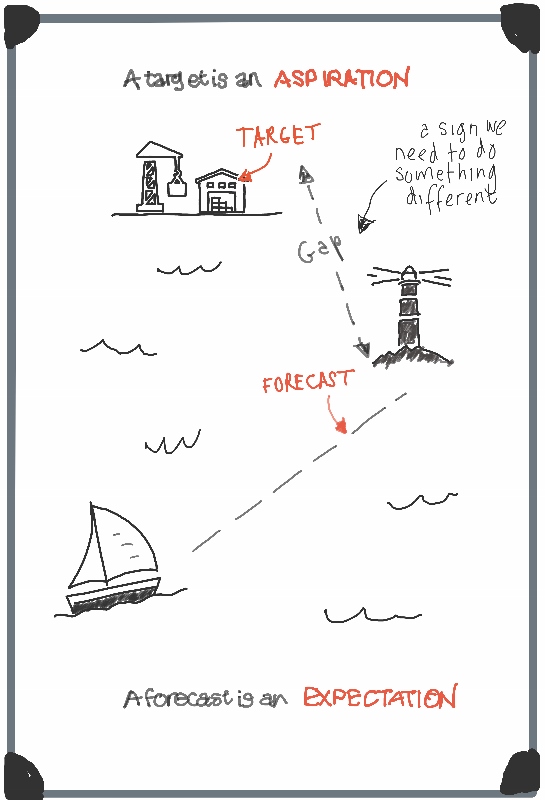 Note: Following is an eight-part serialization of selected content from Steve Morlidge's The Little (Illustrated) Book of Operational Forecasting.
Note: Following is an eight-part serialization of selected content from Steve Morlidge's The Little (Illustrated) Book of Operational Forecasting.
What IS a forecast?
First of all, we need to be absolutely clear what a forecast is – and what it isn’t.
A forecast is a best estimate of future outcomes. An expectation of what you think WILL happen.
This is different to a target, which is what you would LIKE to happen. An aspiration.
Ideally you would like to bring your expectations in line with your aspirations, but more often than not there will be a gap between them. Gaps are important because they tell you that you need to do something different.
Problems start when people get mixed up between forecasts and targets. Very often this happens without anybody ever realizing it.
For example, when people feel good about ‘beating their forecast’ they are using the forecast as a target…and as a result the forecast will stop doing the job it needs to do. It will become a bad forecast.
If this is what you are doing, stop it!
TAKEOUT
Don’t get forecasts confused with targets. A forecast is an expectation – a best guess of what is really going to happen. A target is an aspiration – what we would like to happen.
Coming Next: Different kinds of forecast
In an understandable and laudable effort to get to ‘one set of numbers’ for a business, people often fail to recognise that there are different kinds of forecasts and that they have different purposes. This means that they will need to be designed and operated differently and will have different success criteria. This lesson identifies the key characteristics of operational forecasts.

